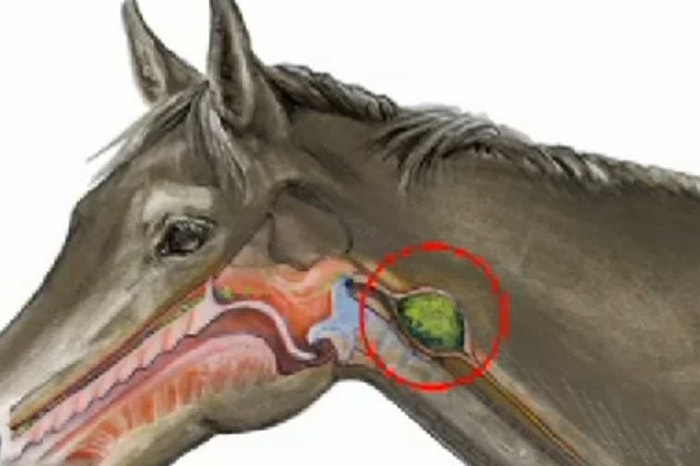Equine emergencies refer to urgent and critical situations involving horses that require immediate attention and intervention to prevent severe injury, suffering, or loss of life. These emergencies can arise from various causes, including accidents, injuries, sudden illnesses, or other unexpected events. Handling equine emergencies effectively requires quick thinking, appropriate knowledge, and access to veterinary care.
In any equine emergency, the first step is to remain calm and prioritize safety for the horse and the people involved. Contacting a veterinarian or an emergency equine clinic is crucial for professional guidance. Many emergencies require veterinary evaluation and treatment, so it’s essential to have a plan, including knowing your horse’s medical history, having emergency contact numbers readily available, and having a well-stocked equine first aid kit. Regular training in equine first aid and emergency procedures can help horse owners and caregivers respond effectively in critical situations.
Most Common Equine Emergencies
Here are some examples of equine emergencies:
1. Colic: Colic is a general term for abdominal pain in horses. It can be caused by various factors, including digestive issues, blockages, torsion (twisting) of the intestines, and more. Severe colic cases can lead to life-threatening conditions and require prompt veterinary intervention.
2. Lameness: Acute and severe lameness, especially when the horse is non-weight-bearing on a limb, can indicate fractures, severe injuries, or infections and require immediate attention.
3. Severe Injuries: Deep wounds, lacerations, punctures, or open fractures that are bleeding profusely or expose bone require emergency care to control bleeding, prevent infection, and provide pain relief.
4. Choke occurs when a horse’s esophagus is blocked, often by food or a foreign object. It can lead to difficulty breathing and severe distress.
5. Breathing Difficulties: Respiratory distress, noisy breathing, or flared nostrils can indicate respiratory problems such as pneumonia, severe allergies, or foreign body obstruction.
6. Foaling Complications: Difficult or prolonged labor, dystocia (difficult birth), or retained placenta can endanger the health of both the mare and foal.
7. Colitis: Severe diarrhea and colitis can quickly lead to dehydration, electrolyte imbalances, and other complications.
8. Severe Allergic Reactions: Anaphylaxis, a severe allergic reaction, can lead to shock and requires immediate medical attention.
9. Neurological Issues: Sudden onset of neurological symptoms like stumbling, incoordination, or inability to stand may indicate severe conditions like equine protozoal myeloencephalitis (EPM) or other neurological disorders.
10. Seizures: Seizures or sudden collapses can indicate neurological problems, toxicity, or other severe conditions.
11. Eye Injuries: Severe eye injuries, especially those affecting the cornea, require immediate care to prevent vision loss.
12. Severe Dehydration: Dehydration can quickly lead to electrolyte imbalances and organ failure.
What Are The Measures You Can Take in Horse Emergencies
Handling equine emergencies requires quick thinking, preparation, and a calm demeanor. Here are essential measures to take in equine emergencies:
- Stay Calm: Your calm presence will help keep the horse calm and make rational decisions.
- Assess the Situation: Quickly assess the severity of the emergency, the horse’s condition, and potential dangers to yourself or others.
- Ensure Safety: Prioritize safety for both yourself and the horse. If the situation is unsafe, wait for professional help to arrive.
- Call a Veterinarian: Contact your veterinarian or an emergency equine clinic immediately. Please provide details about the situation and follow their guidance.
- Provide Basic First Aid: If possible and safe, provide basic first aid while waiting for the vet. This might include controlling bleeding, stabilizing fractures, or providing pain relief.
- Keep Horse Quiet: Keep the horse as quiet and still as possible to prevent further injury and reduce stress.
- Control Bleeding: Apply pressure to bleeding wounds using clean, sterile materials or bandages.
- Immobilize Fractures: Immobilize suspected fractures with padded splints or bandages to prevent further damage.
- Assist Breathing: Clear airways if necessary and ensure the horse’s head is elevated to help breathing.
- Keep Horse Warm: Maintain the horse’s body temperature with blankets, especially in cold weather.
- Administer Medications: Only administer medications if instructed by a veterinarian. Keep a record of any drugs given.
- Prepare for Transport: If the horse needs to be transported to a veterinary clinic, prepare a safe and secure transport vehicle.
- Document Information: Record the horse’s vital signs, symptoms, and any interventions provided.
- Evacuation Plan: Have an evacuation plan for emergencies like fires or floods, and practice it regularly.
- Stay Informed: Stay up-to-date on equine first aid techniques and emergency procedures. Attend workshops or courses to enhance your knowledge.
- Emergency Contacts: Keep a list of emergency contacts, including your veterinarian, the nearest equine hospital, and any relevant horse owners or caregivers.
- Equine First Aid Kit: Maintain a well-equipped equine first aid kit containing essentials like bandages, antiseptics, scissors, wraps, and more.
Final Talk on Equine Emergencies
Remember that each emergency is unique, and your priority is the horse’s well-being and safety. When in doubt, consult with a veterinarian or equine health professional. Being prepared and remaining calm can make a significant difference in handling equine emergencies effectively.

